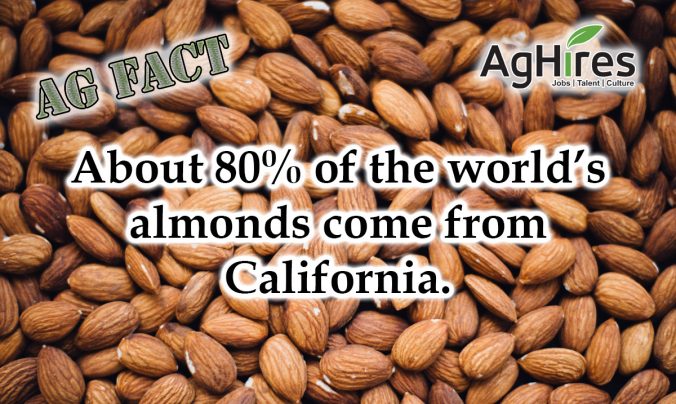
While almonds are grown in 7 other countries, such as Spain, Italy, and Australia, about 80% of the world’s supply comes from California. That makes the nut California’s second largest crop and their number one agricultural export.
Lifecycle of an Almond Tree
November to February: the trees are in a state of dormancy.
Late February to early March: the trees begin to bloom. Light pick and white blooms fill the branches to prepare for pollination. Since almond trees are not self-pollinating, bee help them out. Populations of bees are brought to the orchards to start crop development.
March to June: The almonds mature and grow. The shell hardens to allow the kernel to form. Green almonds may also be harvested at this time for various culinary uses.
July to early August: the hulls begin to split open, which exposes the shell and allows it to dry. The hulls will be open completely just before they are harvested.
August to October: The nuts are harvested. A machine known as a “tree shaker” will vigorously shake the trees to bring the fruit to the ground. Then will then be left to dry for 8 to 10 days before they are swept into rows and picked up by a machine.
Shelling the Kernel
Once the almonds are harvested, the kernel will be removed from their shell. The entire fruit will pass through a roller, which will separate the hull, shell and kernel. From there the kernels will be sorted by size into bins to wait to be shipped for a variety of uses.
More Almond Facts:
- Almond trees are actually growing 3 crops. The kernel, which we eat, the hulls are used for livestock feed, and the shells go to alternative farming uses.
- About 70% exported almonds are in shelled form.
- Almond Trees were brought to California from Spain in the 1700s.
- Romans would give newlyweds almonds as a gift because they known as a fertility charm.
- Bee Hives leave orchards stronger since it is their first food source of the year and because almond pollen is very nutritious to the insects.
Want more Agriculture Facts? Click here
Follow us on Facebook and Twitter to get your weekly dose of Ag Facts.
Sources:
Almond Board of California: 2016 Almond Industry Factsheet
Almond Board of California: About Almonds
Farmology
LA Times: California Farms Lead The Way In Almond Production
World Atlas: Top Almond Producing Countries






